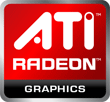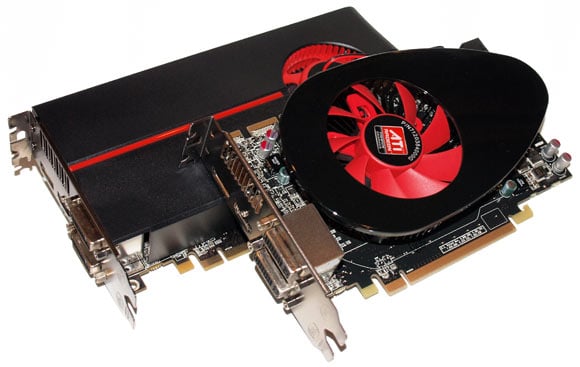ATI Radeon HD 5770 and 5750 Mainstream DX11 GPUs
Introduction and Specifications

A little less than a month ago, AMD unveiled the ATI Radeon HD 5800 series of graphics cards to much fanfare. And for good reason. Not only is the Radeon HD 5800 series the first to offer full DirectX 11 support, among other unique features like Eyefinity, but the flagship ATI Radeon HD 5870 signifies the first time since AMD acquired ATI that the company has had the single, fastest GPU on the market in their repertoire. Not only that, but Radeon HD 5800 series cards also offer top-notch image quality, great power consumption characteristics considering their performance, and they're competitively price too.
As is typically the case with the major GPU players, new products based on their latest architectures trickle down into lower and lower price points over time, until their entire product stack is comprised of cards with similar feature sets, with their main differentiators being performance and price. What is not typical of today's launch, however, is the speed at which AMD is ready with their latest round of product.
Today marks the introduction of the Radeon HD 5700 series. As you can probably surmise, the 5700 series has virtually all of the features of the 5800 series, but is targeted at a more mainstream market segment. In fact, the more powerful of the two cards being introduced today, the ATI Radeon HD 5770, has an MSRP of under $160, putting it within reach of far more consumers. The second card, the ATI Radeon HD 5750 drops in at an even lower $109 - $129. We've got the rest of the juicy details laid out for you on the pages ahead. For now, check out the full specifications below and then we'll move on to some of the finer points of the Radeon HD 5700 series...

AMD Radeon HD 5750 and 5770 DirectX 11 Graphics Cards
|
|
|
|
1.04 billion 40nm transistors
GDDR5 memory interface
OpenGL 3.2 support
ATI Avivo HD Video & Display technology
|
ATI Eyefinity multi-display technology
ATI Stream acceleration technology
ATI CrossFireX multi-GPU technology
ATI PowerPlay power management technology
Certified drivers for Windows 7, Vista, and XP
Radeon HD 5750 Speeds & Feeds
|
If you have already read our coverage of the Radeon HD 5800 series launch, then the above block diagram should look somewhat familiar to you. As we've already mentioned, the new Radeon HD 5700 series GPU offers virtually all of the same features of 5800 series. The difference between the two is that the 5700 series is equipped with fewer SIMD engines, and hence stream processors, fewer texture units, and ROPs and it has a narrower memory memory interface.
Radeon HD 5700 Series GPU Block Diagram
To be more specific, the Radeon HD 5700 series GPU offers up to 10 SIMD engines, with up to 800 total Stream Processing Units. And up to 40 Texture Units, 64 Z/Stencil ROP units, and 16 Color ROP units with a 128-bit GDDR5 memory interface. We say "up to" a number of times here because the Radeon HD 5770 and Radeon HD 5750 cards being introduced today differ in their specific GPU configurations.






